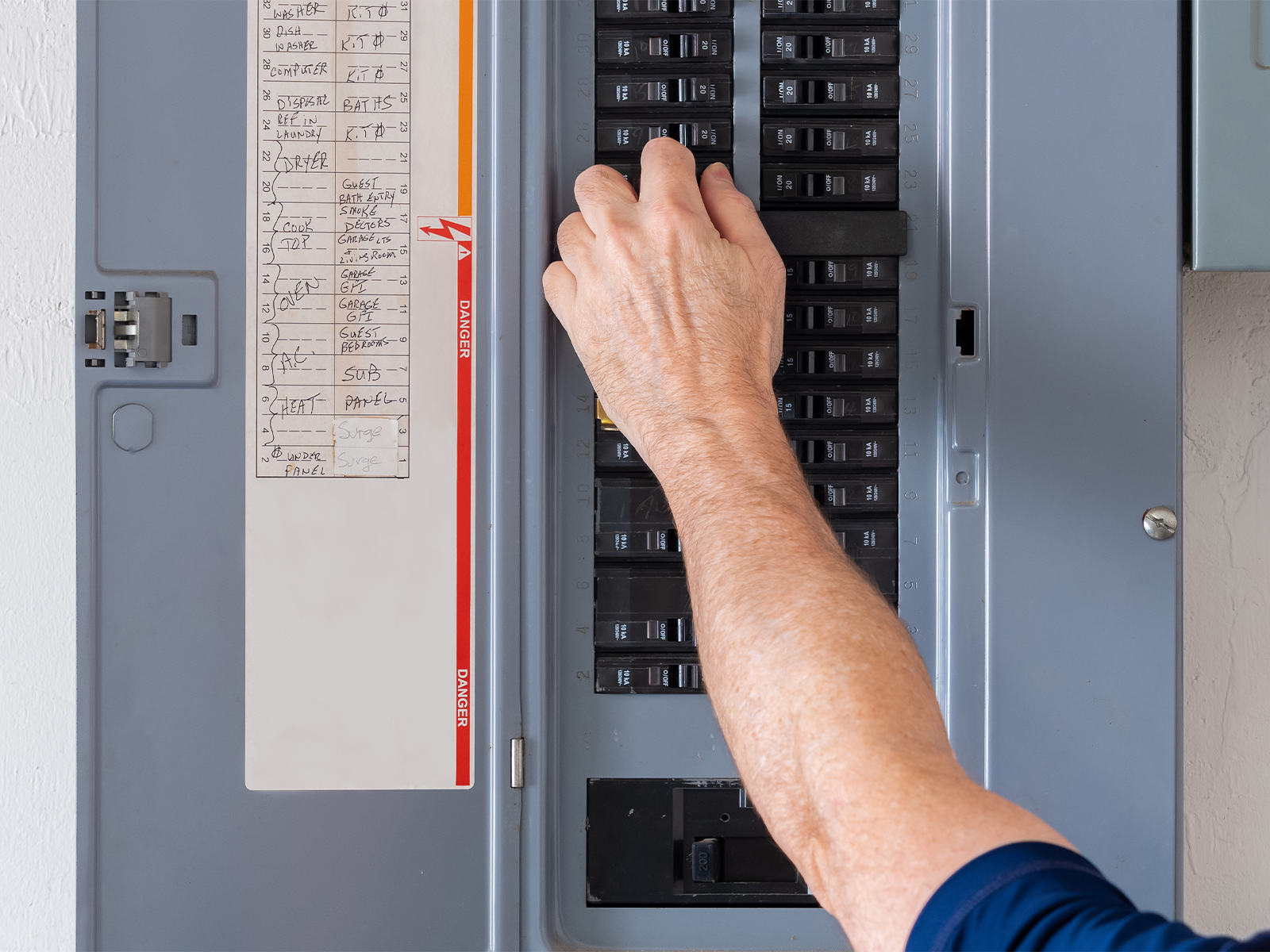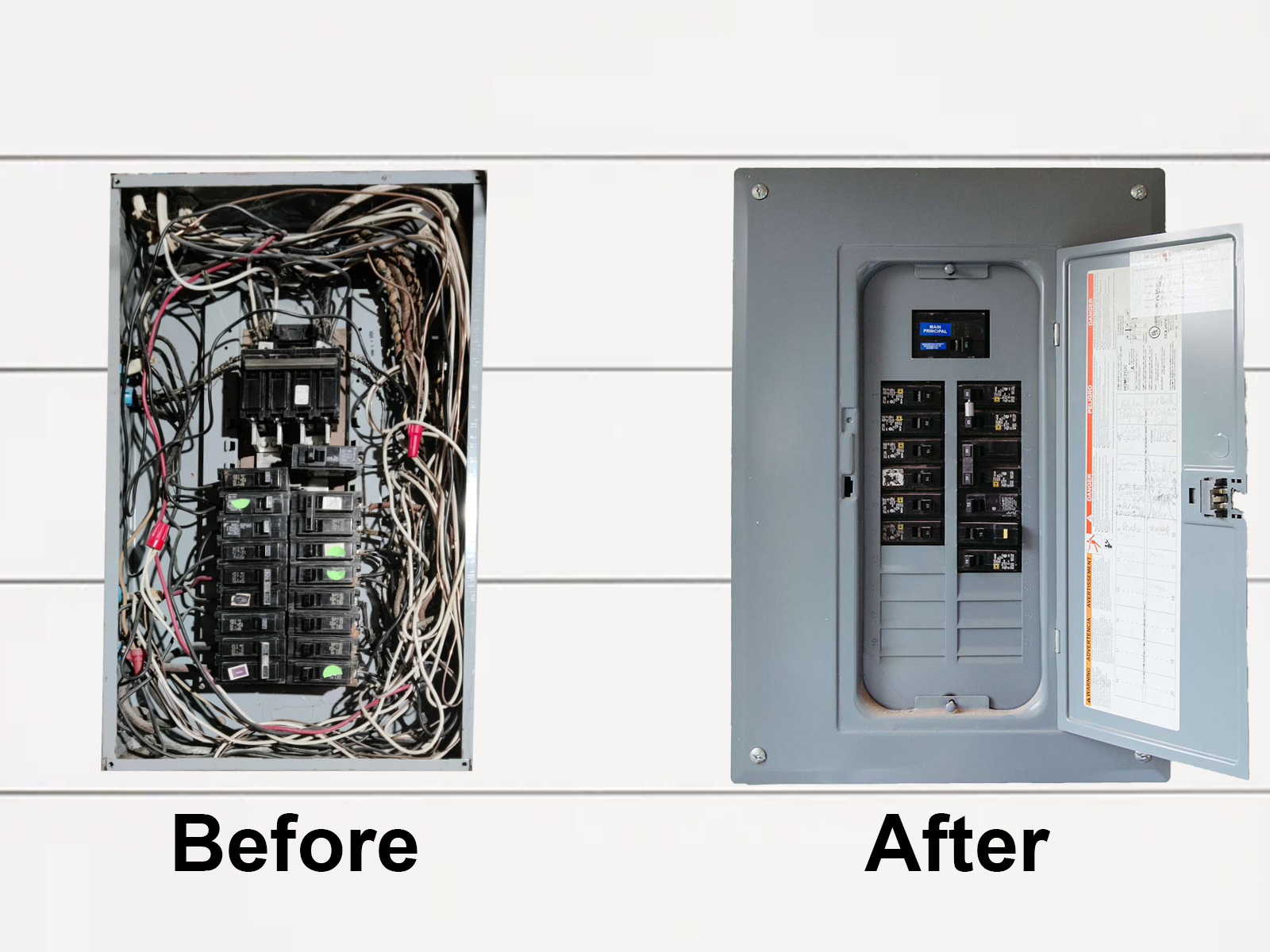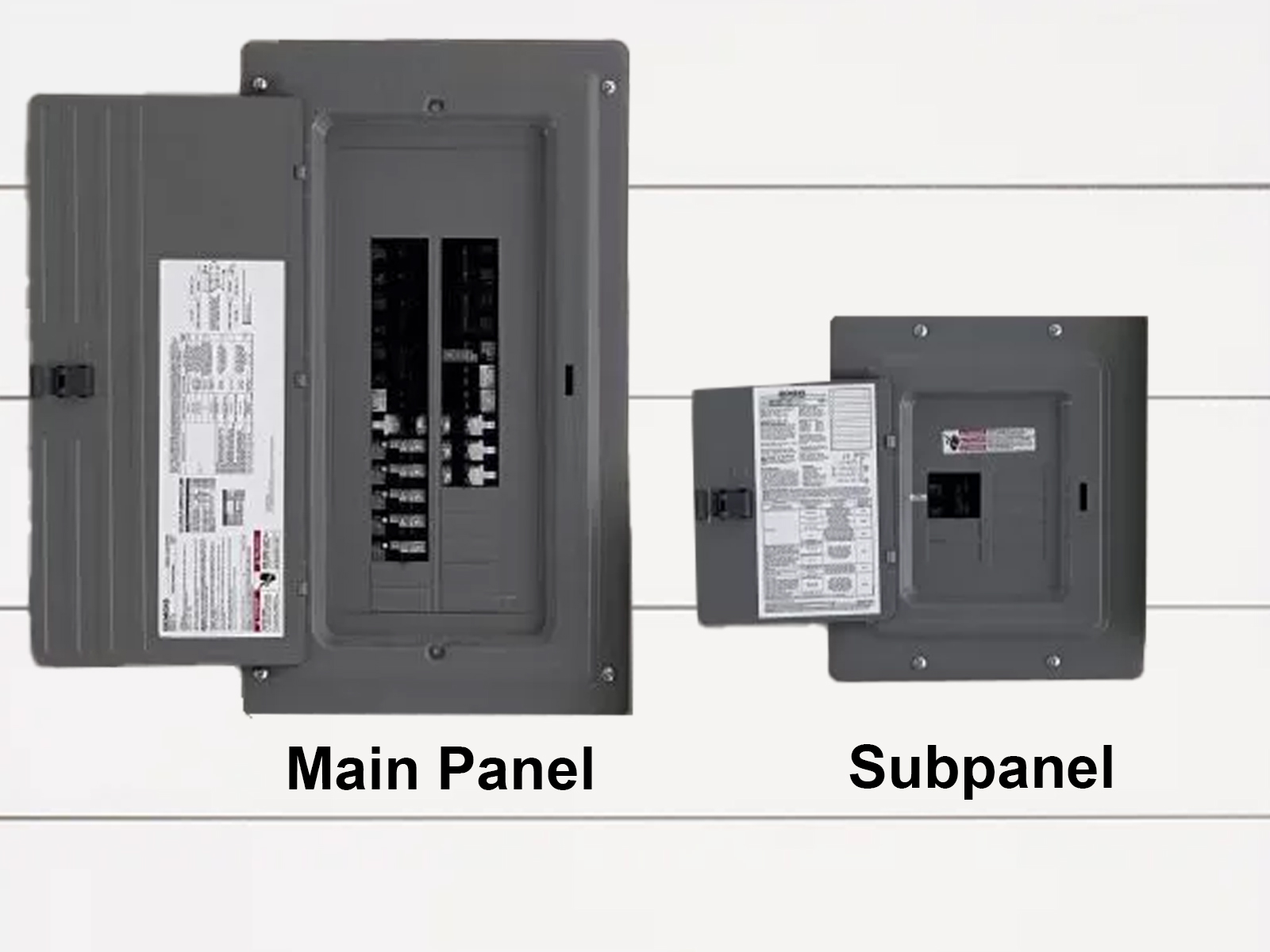Electrical Panel Installation
The electrical panel is housed inside a metal box, which is typically painted gray. Inside the box you will see rows of switches; these are called circuit breakers. Each circuit breaker manages the electrical flow to a segment of your house. There will also be one large switch, usually at the top of the panel; this is the main circuit breaker, and it controls power flow to the entire electric panel. If you take the cover off the electric panel, you will see several other important components, including two hot bus bars, a neutral bus bar, and a ground bus bar. It is very important to have a properly installed panel to insure proper electrical flow as well as to prevent house fires.









